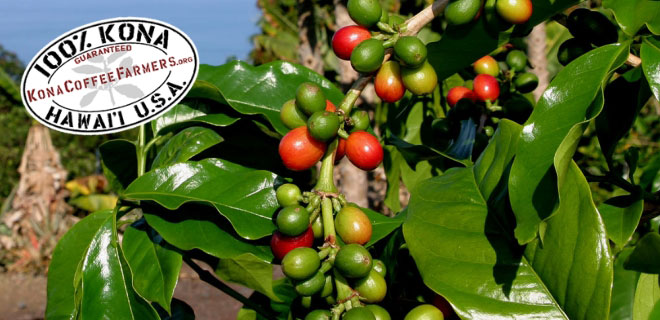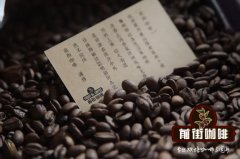Introduction to coffee bean treatment in Ethiopia _ cultivation of coffee varieties in Ethiopia

Professional coffee knowledge exchange more coffee bean information please follow the coffee workshop (Wechat official account cafe_style)
Ethiopia has always been regarded as the birthplace of coffee. When you understand the local way of handling coffee, you can probably understand that this imperial status is well-deserved. Even under the worst production conditions, coffee trees are blocked by other crops, the vast majority of farmers will still insist on not using agrochemicals. Only in some coffee industries operated by the government in the southwest of the country, a small amount of agrochemicals may appear in washed coffee. However, Harar (Harald) and Yirgacheffe (Yega Xuefei), who are known as "garden coffee", are still exceptions, because coffee is always produced in small quantities by individual farmers in the traditional way.
Ethiopian coffee area
Most of the washed coffee on the market comes from Sidamo, H é rr Coffee, Kaffa, and the unique combination of these regions gives Ethiopia an irreplaceable flavor. However, most people may not be able to figure out the differences between products when buying coffee, on the grounds that products will only be labeled as Ethiopian native species. In fact, it represents the rare combination of SL28, SL38, Catuai, Geisha and Typica. The reason why Ethiopian farmers do not specify the name of the variety is to prevent the loss of varieties overseas, just as Rosa coffee was carried forward by Panamanians. Of course, they may not be able to identify the varieties planted because their production is too extensive.
Sun treatment
As long as it is properly handled, sun-processed coffee beans will have fruit flavor and wine-like sour, strong and sweet, mixed with fresh fruit salad flavor. Cantaloupes, cherries, raisins, limes, green apples and even peaches can be tasted in sun-dried Ethiopian coffee. The thicker taste is generally with the texture of honey, like velvet, but a lot of natural color. However, once mishandled, the taste of coffee beans may be destroyed, and the drying process is probably the decisive link.
It is self-evident that the coffee produced by washing can be elegant, mysterious and delicious, while the one treated by the sun has a wild and charming fruit flavor, and the subtle floral, herbal and lemon flavors are untouchable. Generally speaking, bergamot, jasmine and blueberries are clearly reflected in the afterrhyme.
However, in the past decade, there have been many changes in the coffee industry, and the technical principles applied in washing treatment have been gradually extended to the sun treatment to make the quality of coffee beans more stable. At present, there are more and more institutions supporting equal trade, and opportunities for cross-border cooperation continue to increase. apart from carrying out more projects, they also contribute to the progress of technical support. Coupled with the fact that specialty coffee has been paid more and more attention in recent years, it seems that Ethiopia's position on the international stage will continue to be carried forward.
Washing purification method and YIRGACHEFFE (Yega Xuefei)
Yegashafi is a small town in Sidamo province that is too small to be seen on the map. Sidamo province is located in southern Ethiopia. The taste is generally delicate and rich. Like the coffee in the same area, depending on the conditions given by high altitude (5800-6000 ft) and refined with water, the typical Yega Chuefei must have a wild fruit flavor and give off a strong fragrance of flowers.
The floral, fruity, and tea-like aftertaste extracted by water washing and refinement are its attractions for a long time. Eth washing tank was introduced in 1970 and is the stronghold of the first washing tank. The washing process can be understood as fermentation shelling and direct drying. Although the production process and equipment require a lot of investment, because it can produce the traditional wine and lemon blossom flavor, the determination of investors remains unimpeded. Due to the full investment, the design of the sink has been continuously improved and unified. under the professional technology, the stable quality Yega Xuefei has gradually entered the international market in the name of specialty coffee and is favored by many coffee lovers.
No matter what the preparation method is, as long as it is freshly baked and ground, anyone can definitely taste the unique aroma and taste of Yega Xuefei. The fragrance of flowers and citric acid can be fully brought out in the way of cold bubbling. if you choose to brew in hot water, it is also necessary to avoid the loss of delicate fruit aromas caused by excessive brewing.
French filter pots or CHEMEX coffee makers with metal filters are suitable for more coffee oil to pass through.
Ethiopian coffee varieties will continue to grow and change due to genetic diversity, creating a unique flavor that many people pursue!
END
Important Notice :
前街咖啡 FrontStreet Coffee has moved to new addredd:
FrontStreet Coffee Address: 315,Donghua East Road,GuangZhou
Tel:020 38364473
- Prev

The Story of the Historical Origin of Venezuelan Coffee-the present situation of Coffee Variety producing areas in Venezuela
Professional coffee knowledge exchange more coffee bean information please follow the coffee workshop (Wechat official account cafe_style) the Caribbean Islands have always been the trade center between South America and the Old World (Europe). Merchants, missionaries and slaves brought coffee all the way from Europe to Venezuela, among which they had to write El Orinoco Ilustrado (The Orinoco Ilustrat).
- Next

Taste and Flavor characteristics and treatment of Indonesian Sumatra Coffee Bean and Mantenin Coffee Bean
Professional coffee knowledge exchange more coffee bean information please pay attention to the coffee workshop (Wechat official account cafe_style) the world's largest archipelago country Indonesia, the country has more than 400 volcanoes, of which more than 1/3 active volcanoes, accounting for about 16% of the world, but Rakuten residents do not care, and volcanic symbiosis has become a unique local special culture.
Related
- Detailed explanation of Jadeite planting Land in Panamanian Jadeite Manor introduction to the grading system of Jadeite competitive bidding, Red bid, Green bid and Rose Summer
- Story of Coffee planting in Brenka region of Costa Rica Stonehenge Manor anaerobic heavy honey treatment of flavor mouth
- What's on the barrel of Blue Mountain Coffee beans?
- Can American coffee also pull flowers? How to use hot American style to pull out a good-looking pattern?
- Can you make a cold extract with coffee beans? What is the right proportion for cold-extracted coffee formula?
- Indonesian PWN Gold Mandrine Coffee Origin Features Flavor How to Chong? Mandolin coffee is American.
- A brief introduction to the flavor characteristics of Brazilian yellow bourbon coffee beans
- What is the effect of different water quality on the flavor of cold-extracted coffee? What kind of water is best for brewing coffee?
- Why do you think of Rose Summer whenever you mention Panamanian coffee?
- Introduction to the characteristics of authentic blue mountain coffee bean producing areas? What is the CIB Coffee Authority in Jamaica?

